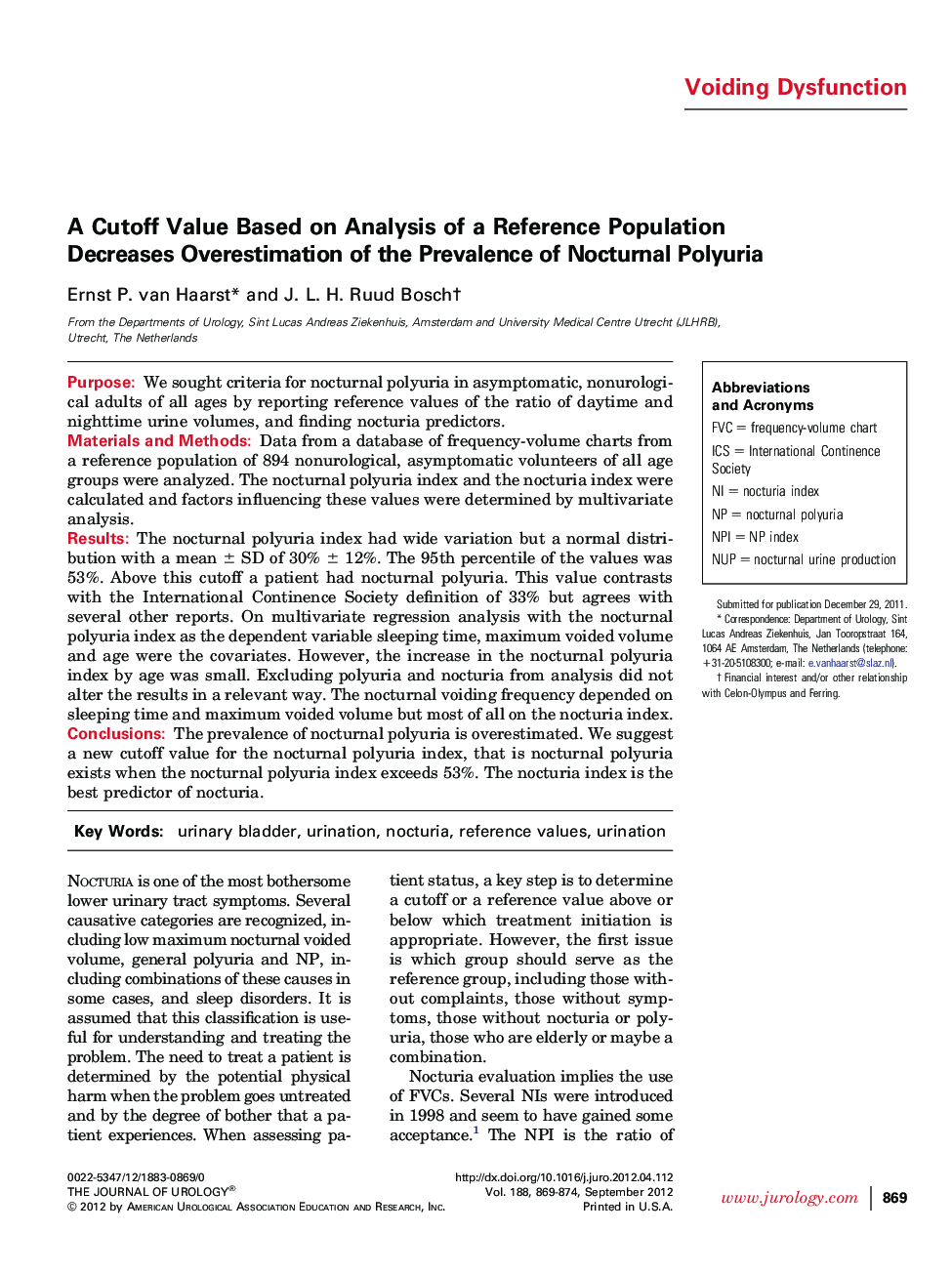| Article ID | Journal | Published Year | Pages | File Type |
|---|---|---|---|---|
| 3862255 | The Journal of Urology | 2012 | 6 Pages |
PurposeWe sought criteria for nocturnal polyuria in asymptomatic, nonurological adults of all ages by reporting reference values of the ratio of daytime and nighttime urine volumes, and finding nocturia predictors.Materials and MethodsData from a database of frequency-volume charts from a reference population of 894 nonurological, asymptomatic volunteers of all age groups were analyzed. The nocturnal polyuria index and the nocturia index were calculated and factors influencing these values were determined by multivariate analysis.ResultsThe nocturnal polyuria index had wide variation but a normal distribution with a mean ± SD of 30% ± 12%. The 95th percentile of the values was 53%. Above this cutoff a patient had nocturnal polyuria. This value contrasts with the International Continence Society definition of 33% but agrees with several other reports. On multivariate regression analysis with the nocturnal polyuria index as the dependent variable sleeping time, maximum voided volume and age were the covariates. However, the increase in the nocturnal polyuria index by age was small. Excluding polyuria and nocturia from analysis did not alter the results in a relevant way. The nocturnal voiding frequency depended on sleeping time and maximum voided volume but most of all on the nocturia index.ConclusionsThe prevalence of nocturnal polyuria is overestimated. We suggest a new cutoff value for the nocturnal polyuria index, that is nocturnal polyuria exists when the nocturnal polyuria index exceeds 53%. The nocturia index is the best predictor of nocturia.
